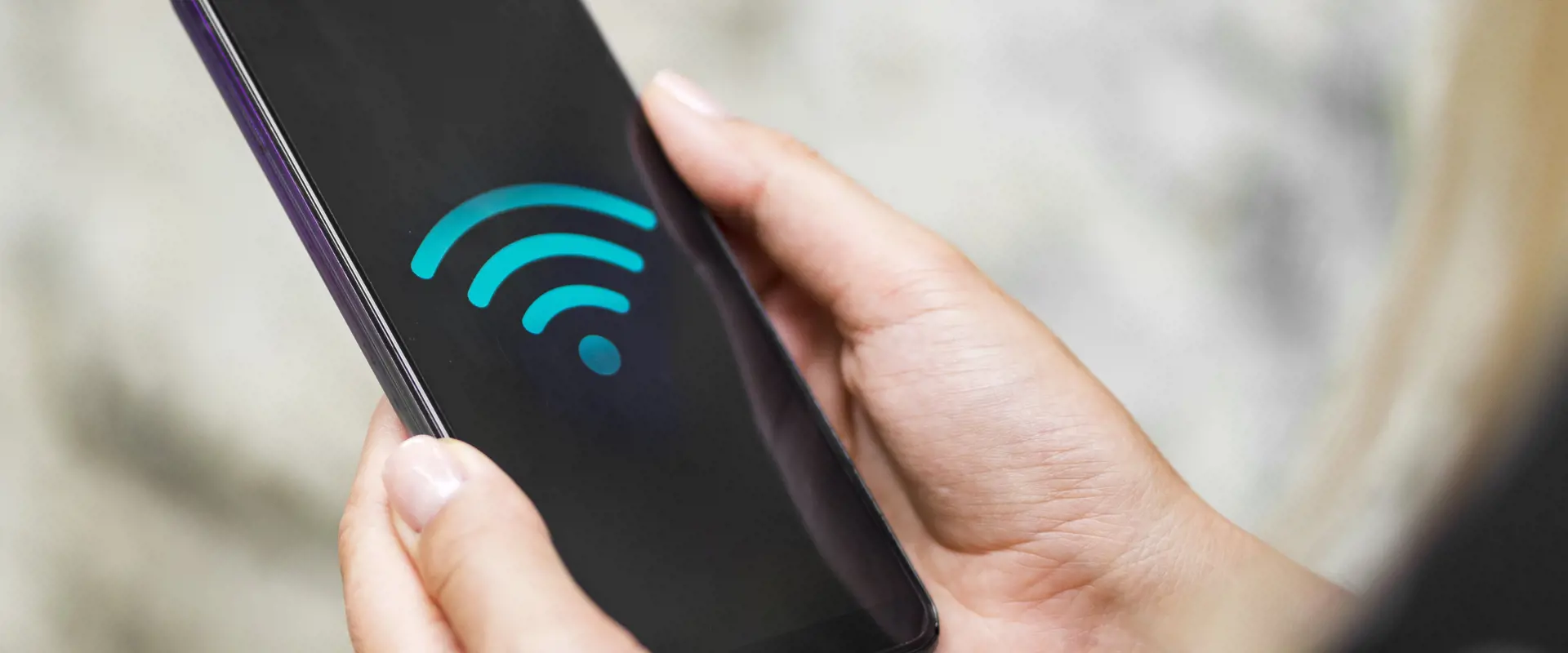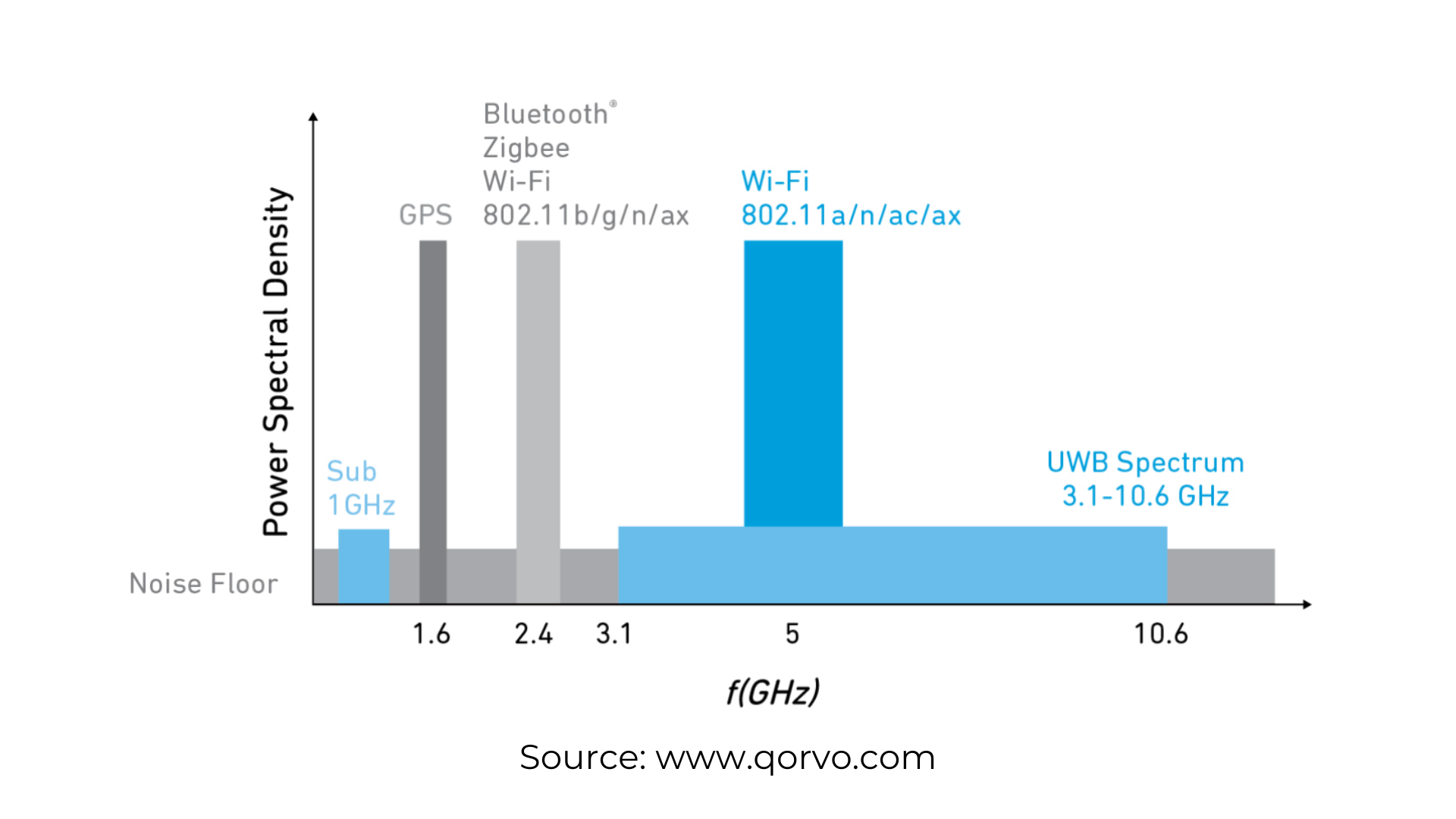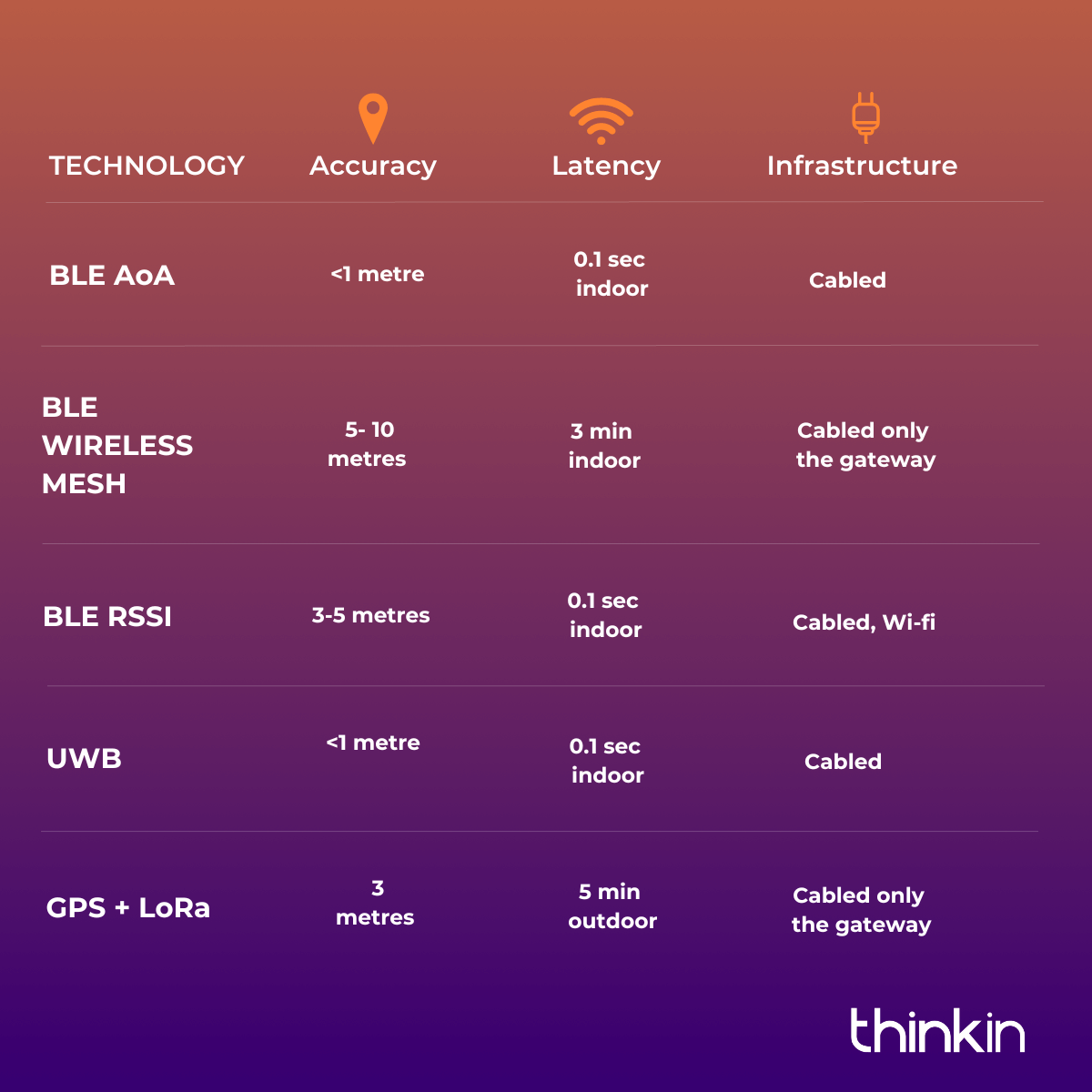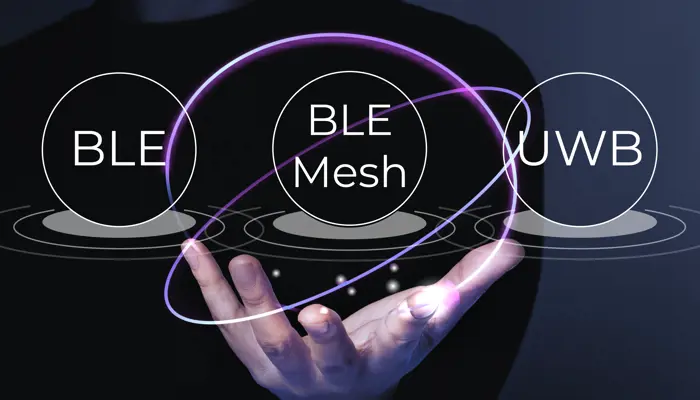
Localisation through Ultra Wideband (UWB): what is it and how does it work?
Ultra-Wideband is a wireless communication technology that is gaining importance in various sectors. When used as the communication protocol in real-time locating systems (RTLS) deployment, it provides location data that can drastically improve industrial processes. Let's take a look at its features and how does it work.
- UWB is a radio-based wireless technology that uses short radio pulses on a wide range of frequencies
- UWB operates with low power consumption and low interference
- UWB can be used in various sectors, including manufacturing and healthcare
Ultra-Wideband (also known as UWB) is a short-range wireless communication technology that uses short sequences of very narrow radio Bluetooth Low Energy (BLE) pulses to transmit data over a wide range of frequencies. Is UWB like Bluetooth Low Energy (BLE) or Wi-Fi? Yes, all these technologies operate through radio waves, but in complex industrial environments UWB can be more accurate and reliable than others.
What is UWB?
UWB is a radio-based wireless technology known for its accuracy and potential. Initially developed for military purposes, it has been commercially available since the late 1990s. UWB radio operates using extremely short radio pulses and spreads the radio energy across a wide frequency band, while maintaining a low power spectral density. Today, UWB has gained significant traction specially for precise indoor locationing and data transmission. Apple, in particular, is a strong advocate for UWB, having designed their own UWB chip called the U1. This chip is integrated into iPhones, AirTags, and Apple Watches, enabling features like "precision finding" to locate AirTag-equipped keychains or Apple Watches nearby.

How does UWB positioning work?
Real Time Locating Systems (RTLS) are used to determine the position of resources moving within a physical space. RTLS can be based on UWB technology that uses radio waves signals as the basis to calculate the position of assets.
Imagine that you are in a large space, such as a manufacturing plant, a warehouse or healthcare facility and you need to find a specific resource quickly and efficiently. This is where positioning via UWB comes into play.
Tracked assets move within a physical space and are equipped with small UWB devices, the tags, that emit a UWB radio signal, which is used for tracking purposes. In UWB-based RTLS, the infrastructure setup is similar to BLE: the physical space is equipped with antennas, strategically placed in various locations, usually on walls or ceilings. Using techniques, such as Time-difference of Arrival (TDoA), these antennas synchronise their timing to achieve precise ranging measurements. UWB tags send data to the antennas, which is then transmitted to an RTLS positioning engine (PE). The PE processes the data and calculates the accurate position of the tracked assets. Other positioning techniques include Angle of Arrival (AoA) and Two-way Ranging (TWR). The position of the tag is then transmitted to software applications, such as the ThinkIN platform, which use it to deliver various services.
How accurate is the UWB technology? What are UWB features?
RTLS based on UWB technology offers high accuracy for asset tracking and indoor positioning in harsh environments. Indeed, through UWB, RTLS can provide locationing data with a sub-meter accuracy, which can be a game-changer compared to other technologies.
Beyond having a high-level of accuracy, UWB technology has other interesting features such as:
- High Bandwidth: UWB can transmit large amounts of data, making it ideal for applications that require high-bandwidth data transmission.
- Limited Power Consumption: UWB tags are battery-powered devices specifically designed to last longer.
- Low Interference: UWB operates at very low power levels, which means it avoids interference with other coexisting wireless communication technologies.

UWB Technology and Use cases
UWB technology is widely used as the basis for the delivery of indoor location services in many different areas, such as industrial and medical facilities. Thanks to the combination with the right location intelligence software, RTLS based on UWB technology gives you the possibility to get relevant real-time data about what is going on inside your facility. ThinkIN location intelligence software leverages these data to improve your performance and meet your business objectives. Let's look at some use cases:
Industry:
- Asset tracking
- Process monitoring
- Access control
- Tooling management
- Warehouse management
Healthcare:
- Asset tracking of medical equipment
- Automatic management of inventory
- Planning of maintenance activities
- Workflow digitisation and optimisation
- Monitoring patient safety
UWB is a wireless communication technology that has many applications in a wide range of industries. Its high-bandwidth, low-power consumption, and precision location services make it an ideal technology at the basis of various applications, ranging from asset tracking, process management and tooling management, to monitoring of patient safety. As UWB technology continues to evolve, it has the potential to revolutionise the way we communicate wirelessly. If you're interested in learning more about RTLS based in UWB and how it can be used in your sector of application, contact us now. Our team of experts can help you understand the benefits and potential of RTLS.




